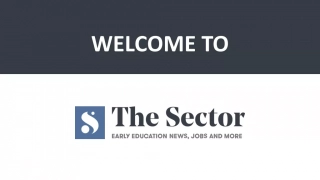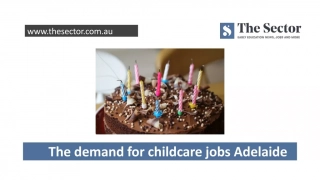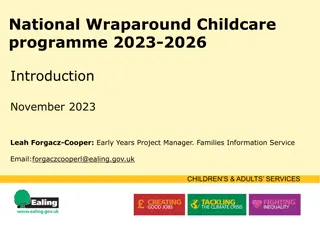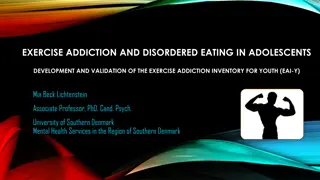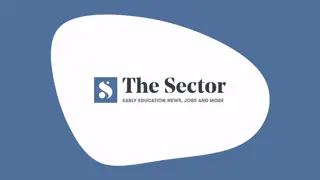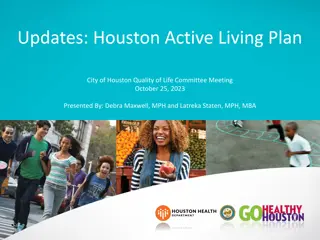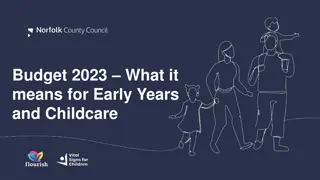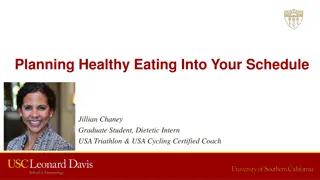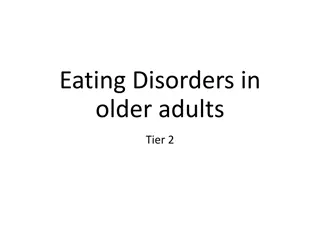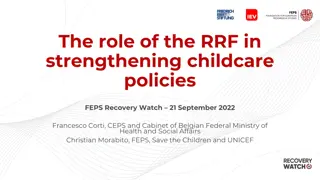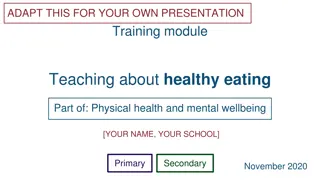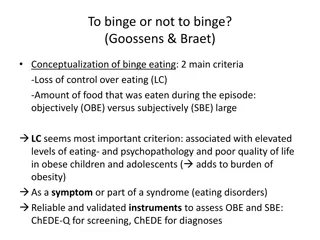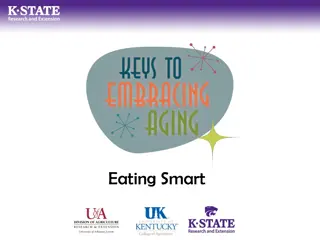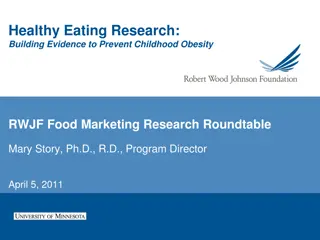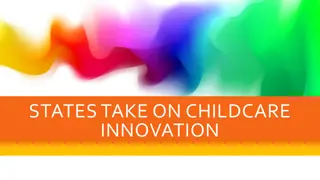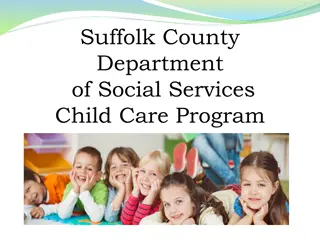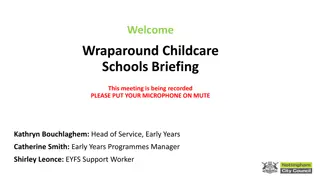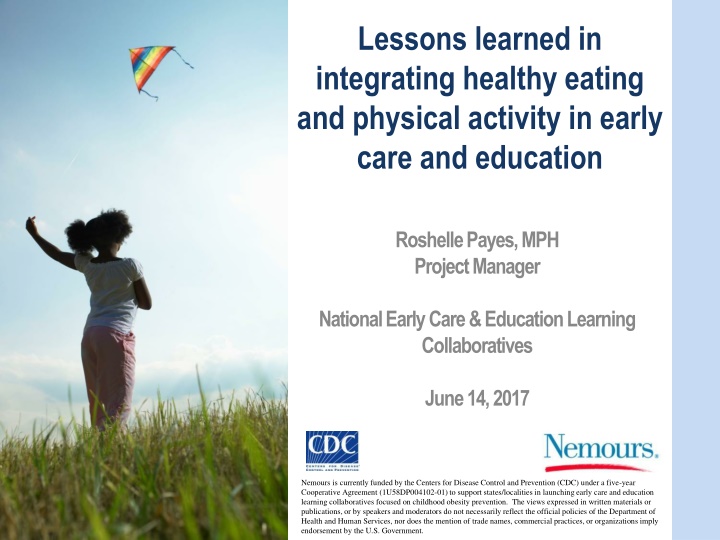
Integrating Healthy Eating and Physical Activity in Early Care and Education: Lessons Learned
Explore experiences and lessons learned in integrating healthy eating and physical activity standards in early care and education settings. Discover strategies for successful implementation in state systems and action plans.
Download Presentation

Please find below an Image/Link to download the presentation.
The content on the website is provided AS IS for your information and personal use only. It may not be sold, licensed, or shared on other websites without obtaining consent from the author. If you encounter any issues during the download, it is possible that the publisher has removed the file from their server.
You are allowed to download the files provided on this website for personal or commercial use, subject to the condition that they are used lawfully. All files are the property of their respective owners.
The content on the website is provided AS IS for your information and personal use only. It may not be sold, licensed, or shared on other websites without obtaining consent from the author.
E N D
Presentation Transcript
Lessons learned in integrating healthy eating and physical activity in early care and education Roshelle Payes, MPH Project Manager National Early Care & Education Learning Collaboratives June 14, 2017 Nemours is currently funded by the Centers for Disease Control and Prevention (CDC) under a five-year Cooperative Agreement (1U58DP004102-01) to support states/localities in launching early care and education learning collaboratives focused on childhood obesity prevention. The views expressed in written materials or publications, or by speakers and moderators do not necessarily reflect the official policies of the Department of Health and Human Services, nor does the mention of trade names, commercial practices, or organizations imply endorsement by the U.S. Government.
Todays objectives Share Nemours and state partners experiences in integrating healthy eating and physical activity (HEPA) standards in early care and education (ECE) settings Explore success and challenges in integrating HEPA in state systems Summarize strategies that could be applied to other state work and action plans
Outline Overview of National ECELC Project CDC s Spectrum of Opportunities for Obesity Prevention in ECE Settings Summary of ECELC State experiences Lessons learned: enablers and challenges Mini-panel: State experiences in Indiana, Kentucky, Missouri Reflections & Recommendations Questions
The ECELC Model 4
CDC/Nemours 6 Year (2012 2018) Cooperative Agreement The National Early Care & Education Learning Collaboratives (ECELC) Project Nemours funds state/local implementation partners (public/private organizations) The ECELC project engages state partners to: Provide an intensive obesity prevention intervention through learning collaboratives to groups of center and home-based ECE providers (child care, Head Start, pre- kindergarten); and, Better integrate national obesity prevention standards and implementation support for these standards into components of states ECE systems.
The Model Two Simultaneous and Synergistic Approaches Practice change to support ECE providers to meet best practices in Healthy Eating, Physical Activity, Screen Time and Breastfeeding (as defined by Caring for our Children and LMCC). Nemours provides materials, guidance, technical assistance, peer support and evaluation. Systems change/integration to weave best practices into state and local ECE infrastructure. Work is done via a state/local plan that is developed and implemented in coordination with stakeholders, takes advantage of opportunities, and reflects realities. Nemours provides technical assistance, coaching and peer support from other states to integrating childhood obesity prevention into one or more components of their ECE systems using the CDC s Spectrum of Opportunity. 6
ECELC Reach Total Kids Reached: 168,312 Total Programs Reached: 1,904 Collaboratives Completed: 82
Practice Change 9
Summary of the Model Micro or Provider Level A collaborative is comprised of leadership teams from 20-30 ECE programs. A leadership team is 2-3 center staff Center Director, Teacher, cook, parent. Each collaborative has 2 assigned trainers/technical assistance providers. Aligned with national best practice guidelines from: Lets Move! Child Care (LMCC) Preventing Childhood Obesity in Early Care and Education Programs (2nd Edition) Nutrition and Physical Activity Self-Assessment for Child Care (Go NAP SACC) tool Robust evaluation via Gretchen Swanson Center for Nutrition 10
Taking Steps to Healthy Success Original curriculum was directly taken from the Delaware model 3rdEdition curriculum has evolved: Refined, clearer directions, more structure Revisions based on feedback and lessons learned Final version of the ECELC Curriculum Customized to meet state needs Translated into Spanish and Creole in Miami Branding/alignment with existing initiatives, e.g. Arizona s Empower, Missouri s MOveSmart, EatSmart Adapted for family child care providers Combined with online learning modules in Kentucky
Results to Date Let s Move! Child Care Checklist Quiz (LMCC) A majority of programs evaluated reported overall improvement toward meeting best practices Most items demonstrated improvement in number of programs meeting the best practice from baseline to post-assessment The items that have tended to improve by the largest margin include fried meat and screen time education for parents 13
Results to Date Nutrition and Physical Activity Self-Assessment for Child Care 2.0 (NAP SACC) Across all NAP SACC areas assessed, the mean scores increased significantly from baseline to post- assessment Programs tend to report largest improvement in the topic area of Child Nutrition Programs that participated in CACFP, participated in Head Start, were accredited, or were for-profit tended to improve more than others 14
Lessons Learned provider level Technical assistance on how to meet and sustain best practices (operationally) is more important than education on best practices. Providers own health is often the motivation for changes. ECE staff wellness is a concern. Child directed classroom curricula on healthy eating and physical activity (i.e. IMIL, SPARK) aren t implemented consistently. Link best practices to ELG, licensing standards and QRIS standards whenever possible because ECE providers are confused and overwhelmed. 15
Lessons Learned provider level cont TA is only effective from staff who build relationships with providers to influence change content knowledge isn t that important. ECE providers are often overwhelmed by people coming to help . Need to all work together but existing helpers (licensing, CACFP monitors, QRIS coaches) don t know the best practices or how tos . Center leadership is key. Weave-in parent involvement/engagement. Most important incentive is licensing or professional development credits. 16
Integrating HEPA into ECE systems 17
Summary of the Model Macro or Systems Level CDC s Spectrum of Opportunities helps each state partner identify ways to integrate content and standards into existing state ECE and child health systems (i.e. professional development, licensing, CACFP, QRIS). Each state developed an integration plan for supporting providers that went through learning collaboratives and for bringing HEPA content support to all other providers in the state through systems integration. Nemours and CDC meet bi-monthly with state partners to provide coaching and TA around this system level work and to track progress (activities). Connecting state partners with other childhood obesity prevention initiatives (i.e. YMCA s Promoting Healthy Communities, Farm to Preschool) 19
Systems Change/ Integration guiding principles We aren t trying to promote a certain model or approach Need to spread, scale and sustain support for ECE providers to meet best practices Goal for each state or community is to figure out which opportunities to work on and how to weave in childhood obesity prevention There is no correct approach or right answer; in one state licensing may be the best approach, but in another in may not. States have tools and technical assistance to look at the opportunities, challenges, funding opportunities and integration options. Be nimble!
Summary of progress across ECELC states: 2013 - 2017 Fall 2016: Nemours and partners began documenting each state s experience in a case study The ECELC case study series explores the integration opportunities pursued by each state, the outcomes of these efforts, and factors that may have hindered or enhanced their success. Summer 2017: Finalizing series of case studies: Summary case study looking at themes and trends across states 9 individual state case studies 6 thematic case studies: CACFP, Emerging opportunities, Funding & Finance, Licensing, Pre- Service & Professional Development, QRIS
Pre-Service & Professional Development Partners in Arizona and Kentucky created online modules aligned to HEPA standards. In Kentucky, TA packages accompany those modules and enhance trainers ability to support ECE programs to make changes. Other state partners created new trainings to meet needs identified by ECE providers or stakeholders. For example, an infant/toddler feeding training was developed in Indiana and Virginia, and parent trainings in Los Angeles. Many partners that focused on Pre-service and Professional Development as an integration strategy strived to ensure that continuing education units (CEUs) and licensing clock hours/in-service hours were available for all participants.
Licensing & Regulations On-going efforts in Kentucky, Los Angeles, CA, Missouri, and New Jersey on promoting the inclusion of HEPA standards in licensing regulations. Arizona has a highly visible HEPA initiative (Empower) tied to licensing regulations and the National ECELC was co- branded to align with the program as Empower PLUS+. Arizona leverages licensing and QRIS support and aligns training and data collection for a coordinated strategy to support the achievement of HEPA practices in ECE settings. In California, stakeholders built uponlegislation that requires new licensed providers participating in Preventive Health and Safety Practices (PHSP) Training to receive a 1-hour training on child nutrition. Partners aligned curricula and existing training with the new child nutrition training to ensure providers are up-to-date with current information 23
Quality Rating & Improvement Systems 5 partners (Indiana, Kansas, Los Angeles, CA, New Jersey and South Florida), focused on QRIS as a primary integration strategy. Partners in these states engaged with stakeholders public and private to leverage the reach and potential of QRIS to weave HEPA topics into broader quality improvement strategies. Four of the five partners that focused on QRIS did so from the perspective of integrating HEPA standards into QRIS, either through the launch of a new QRIS or revisions to an existing QRIS. South Florida, Kansas, and New Jersey as well as Virginia have trained QRIS technical assistants to enhance their ability to assist ECE programs.
Lessons Learned & Challenges (1) Pace. Changes to the ECE system most notably QRIS and licensing regulations take significant time. The pace of change is slow due to administrative processes, changing priorities, staff turnover or other factors that cause delays in finalizing and implementing revised systems. Navigating funding streams. Funding can be a barrier to change. There is no dedicated funding stream for HEPA program improvement in ECE. Creating change within voluntary systems. Consider the depth of impact within voluntary systems. In some states, the QRIS reaches only a small number of ECE providers. In other states, exemptions to licensing requirements are huge allowing many ECE providers to operate without participating in that system.
Lessons Learned & Challenges (2) Coordination among multiple partners or stakeholders. Multiple projects, initiatives, stakeholder groups, or public and private entities touch the ECE system or obesity prevention efforts. Staff and leadership turnover. Changes in administration and the political climate within a state may translate into changes in statewide priorities or funding allocations. Course correction. A variety of factors (e.g., stakeholder buy-in, leadership priorities, staffing, funding) impact the degree to which partners were able to maintain course on particular strategies. Maintaining flexibility and adaptability for changes in course prove important factors for successfully integrating HEPA into state systems.
Panel Discussion: State Experiences 27
Mini Panel: Indiana, Kentucky, Missouri What do you feel has been your biggest achievement related to integrating HEPA in broader ECE settings/systems? What has been your biggest challenge? What s been your biggest lesson learned?
Reflections & Recommendations 29
5 Reflections & Recommendations 1) Stay aware of new or unexplored funding opportunities and have an ability to respond quickly. 2) Maintain flexibility with integration pathways and understand priorities, timing, and potential roadblocks. 3) Be strategic about convening and using a stakeholder group and maintaining relationships with key individuals and organizations.
5 Reflections & Recommendations 4) Manage planning, expectations of stakeholders, and communication with providers with respect to the pace of change. 5) Determine from the onset where change takes place and put the appropriate resources and people in place to support the effort.
Thank you! 33

